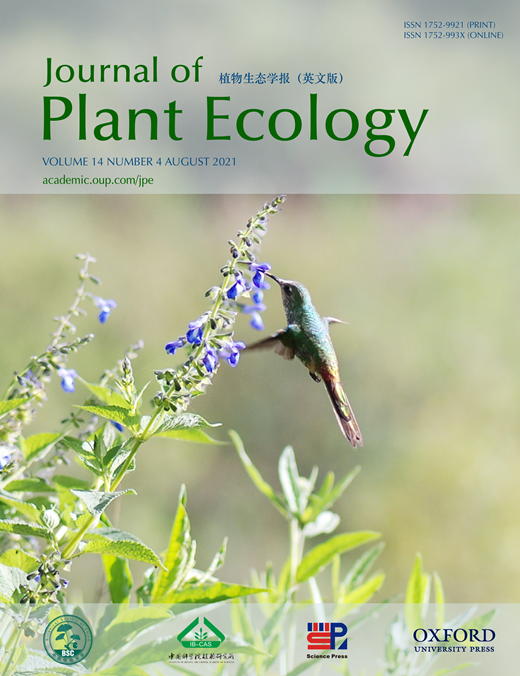Camila N. Barrionuevo, Santiago Benitez-Vieyra and Federico Sazatornil
Aims
Adaptive convergence in floral phenotype among plants sharing a pollinator guild has been acknowledged in the concept of pollination syndrome. However, many plants display traits associated with a given syndrome, but are visited by multiple pollinators. This situation may indicate the beginning of a pollinator shift or may result in a stable situation with adaptations to different pollinators. In Salvia stachydifolia, a previous study suggested that flower shape is optimized to maximize the contribution to pollination of bees and hummingbirds. Here, we studied three additional aspects of its floral biology: sexual phases, nectar dynamics and breeding system, and examined their connection with pollinators’ behaviour to explore the presence of adaptations to bee and/or hummingbird pollination.
Methods
Using a greenhouse population, we applied five pollination treatments to characterize breeding system. To determine sexual phases, we recorded flower opening, anther dehiscence, corolla fall and stigma receptivity. Additionally, we characterized nectar volume and concentration dynamics along the day. Finally, to determine pollinator assemblage and visitation patterns, we performed field observations and recorded pollinators’ behaviour.
Important Findings
Salvia stachydifolia was partially protandrous and self-compatible, but open-pollinated plants attained the highest reproductive success, suggesting that reproduction is mainly dependent on pollinator activity. Bombus opifex bumblebees were the most frequent visitors, but Sappho sparganura hummingbirds dominated visits early in the morning and at dusk. Nectar was typical of bumblebee pollination. We suggest that the bee–hummingbird mixed visitation constitutes an unstable evolutionary situation, making S. stachydifolia an ideal system to understand the ecological circumstances in which pollination shifts occur.
 Volume 14 Issue 4
Volume 14 Issue 4






